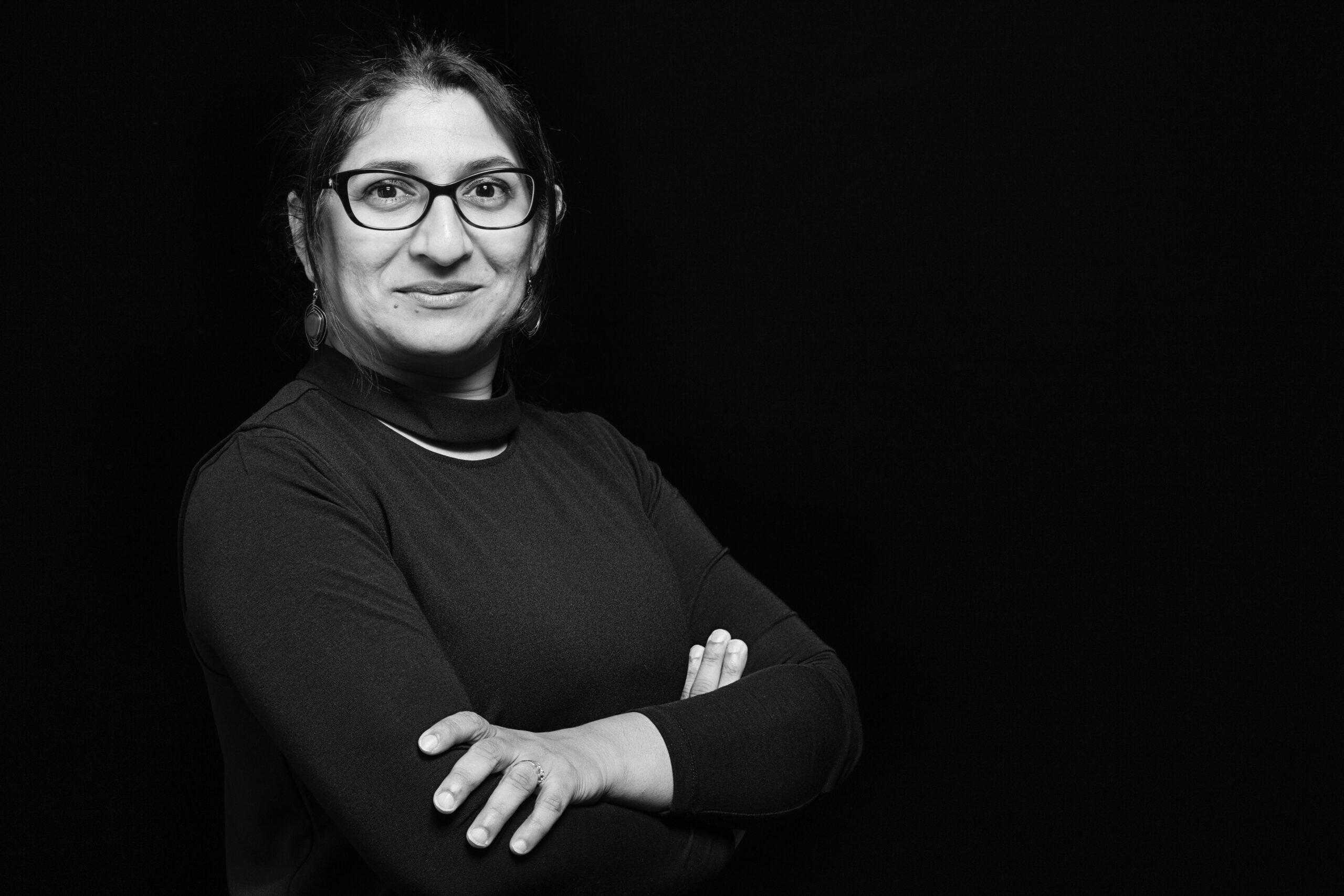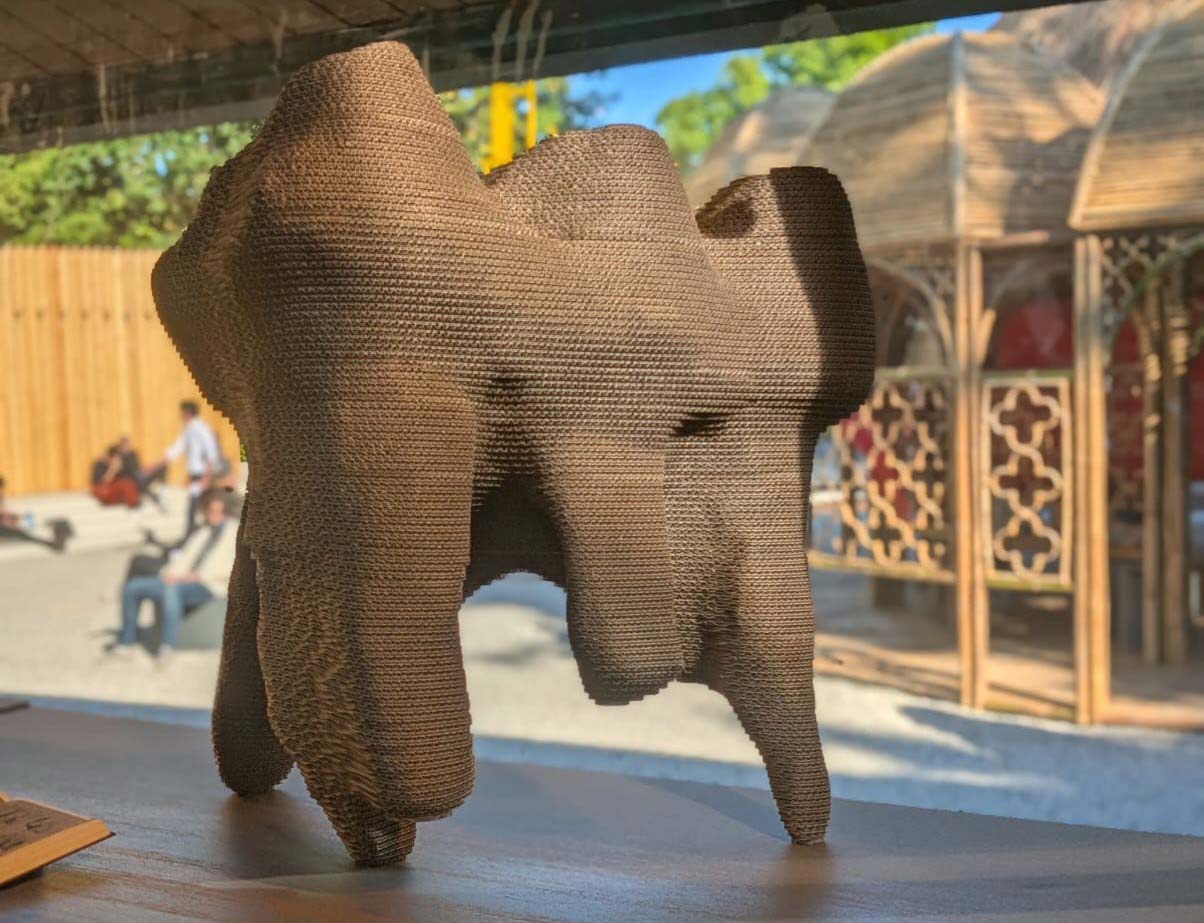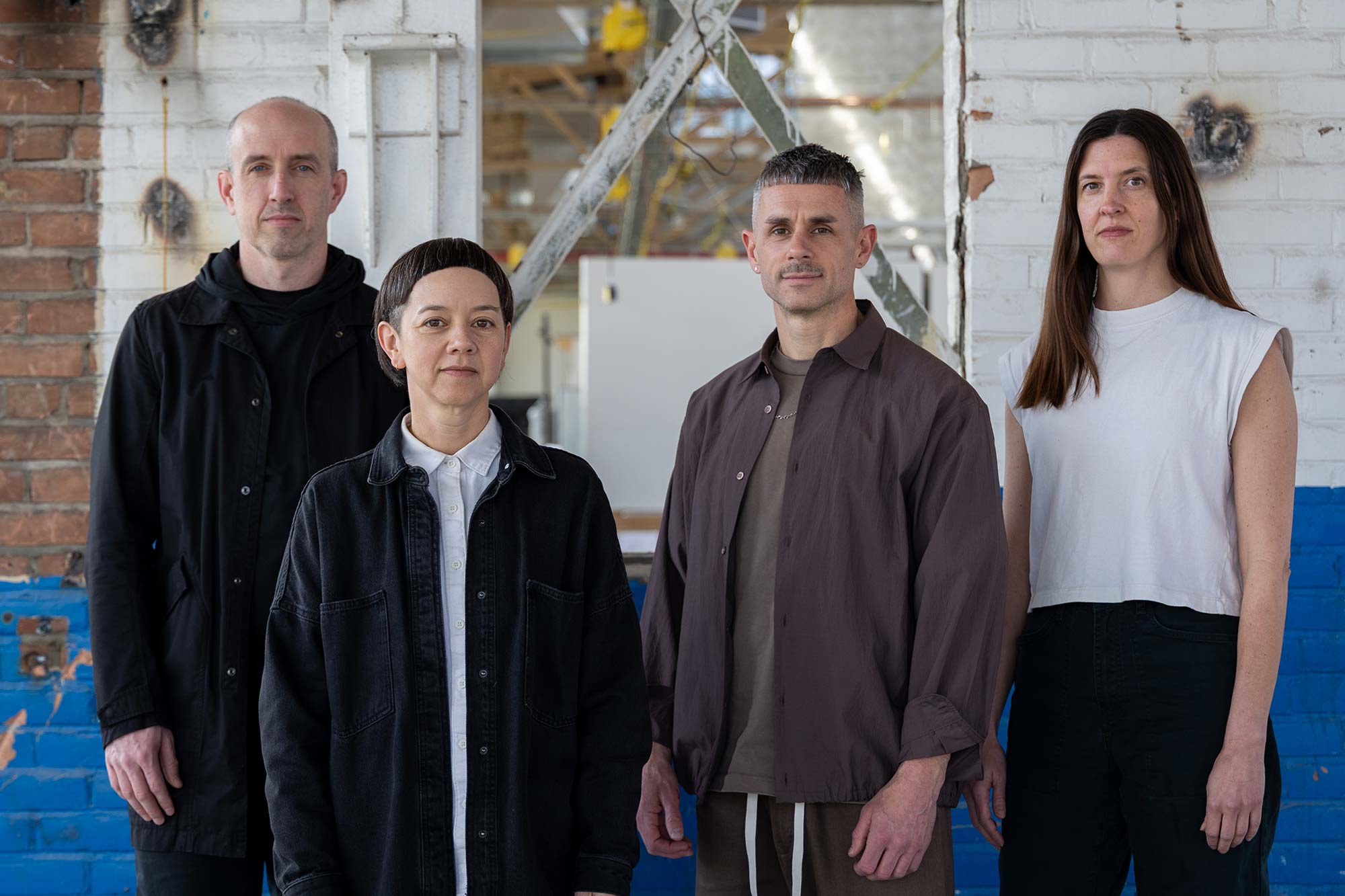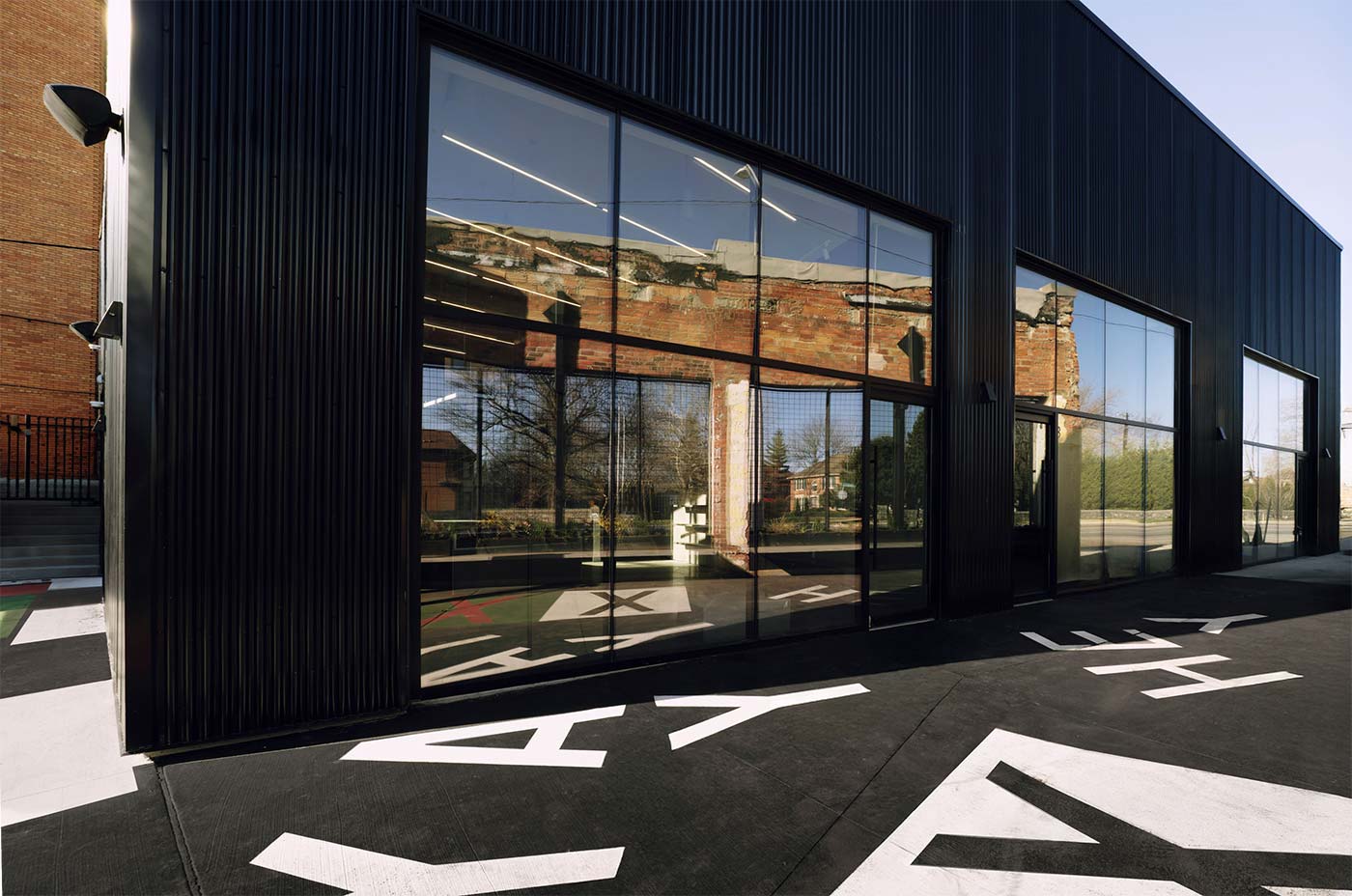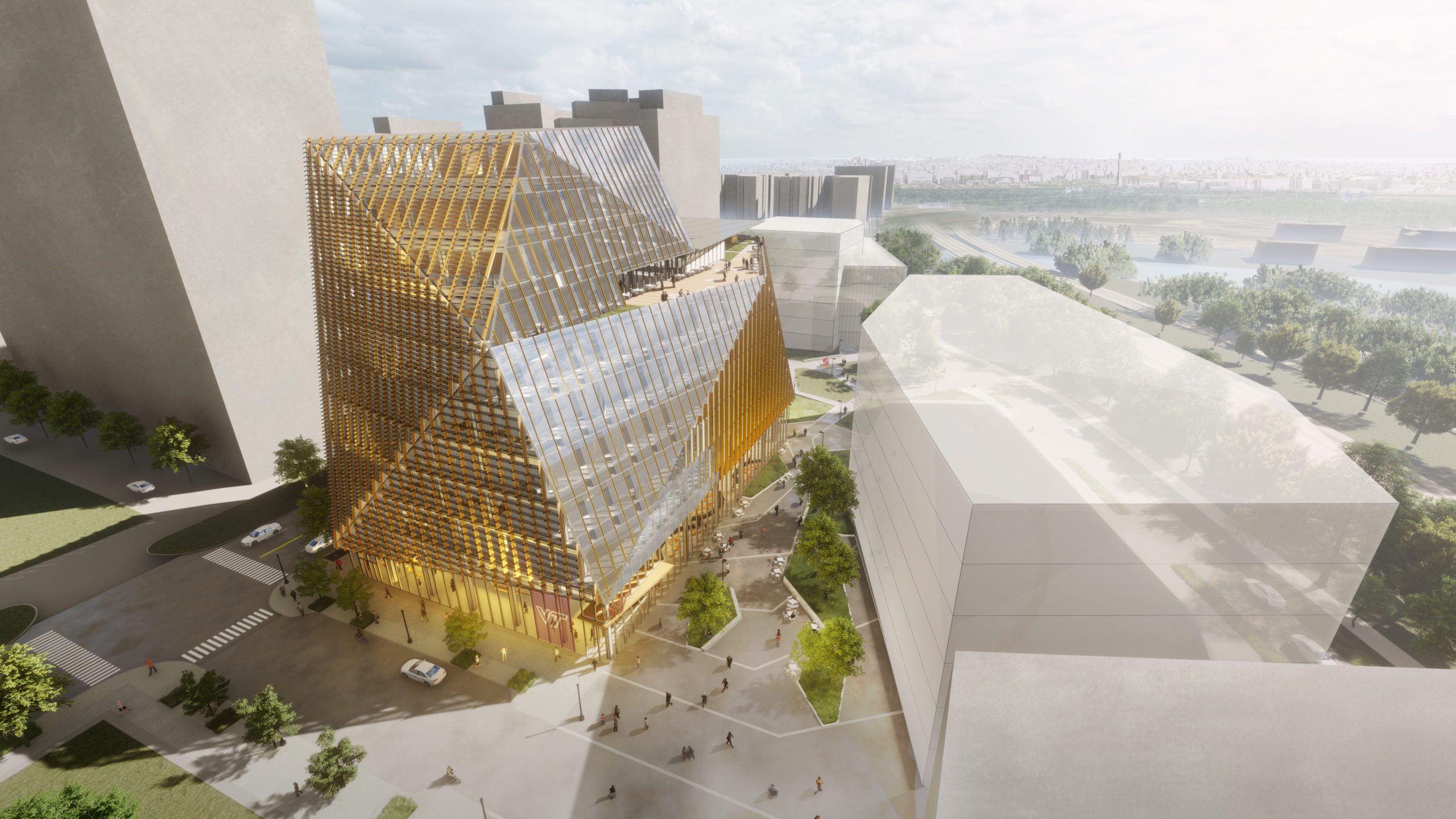
Portico Spring 2021: David Johnson, M.Arch ’95, Designs Universities’ Futures and Gives Back to His Own
David Johnson’s clients live and breathe big ideas and see the architecture of a campus as a way to help incubate those ideas. “They understand that a building is the physical manifestation of an intellectual construct,” Johnson says. “I’m a little bit of an academic architect, so I find my groove with that higher education crowd.”
Part of Johnson’s role at SmithGroup is to serve as a design leader, and throughout his career, he has specialized in higher education projects. He led the planning and concept design of the renovated U-M Dental School and the new research facilities within the Biological Sciences Building. He has done work for Harvard and Yale — including a current project to relocate Yale’s psychology department to its medical campus — but he’s also done work for community colleges in Arizona.
“I have a deep conviction that higher education is a social good and benefit and that it is a key to unlocking social mobility and breaking down barriers. So I work across the spectrum of higher education to support that,” says Johnson, M.Arch ’95.
Currently, Johnson also is working on his third project for Virginia Tech — the innovation campus affiliated with Amazon’s new HQ2. He calls it an attempt to create a new type of urban environment in which “the entire building and place are organized around intersecting concepts of creating humanist settings that deliver this highest level of performance.”
The project is pursuing carbon neutrality at the campus scale and the building scale. The building is optimized for solar PV generation, and Johnson has been working with the City of Alexandria to negotiate how an adjacent city-owned park can support the campus’s energy efficiency through a thermal energy exchange with the sewage wastewater. “We’re helping reconceive what it means to have passive and active recreation and ecosystem services combined in the public realm,” he says.
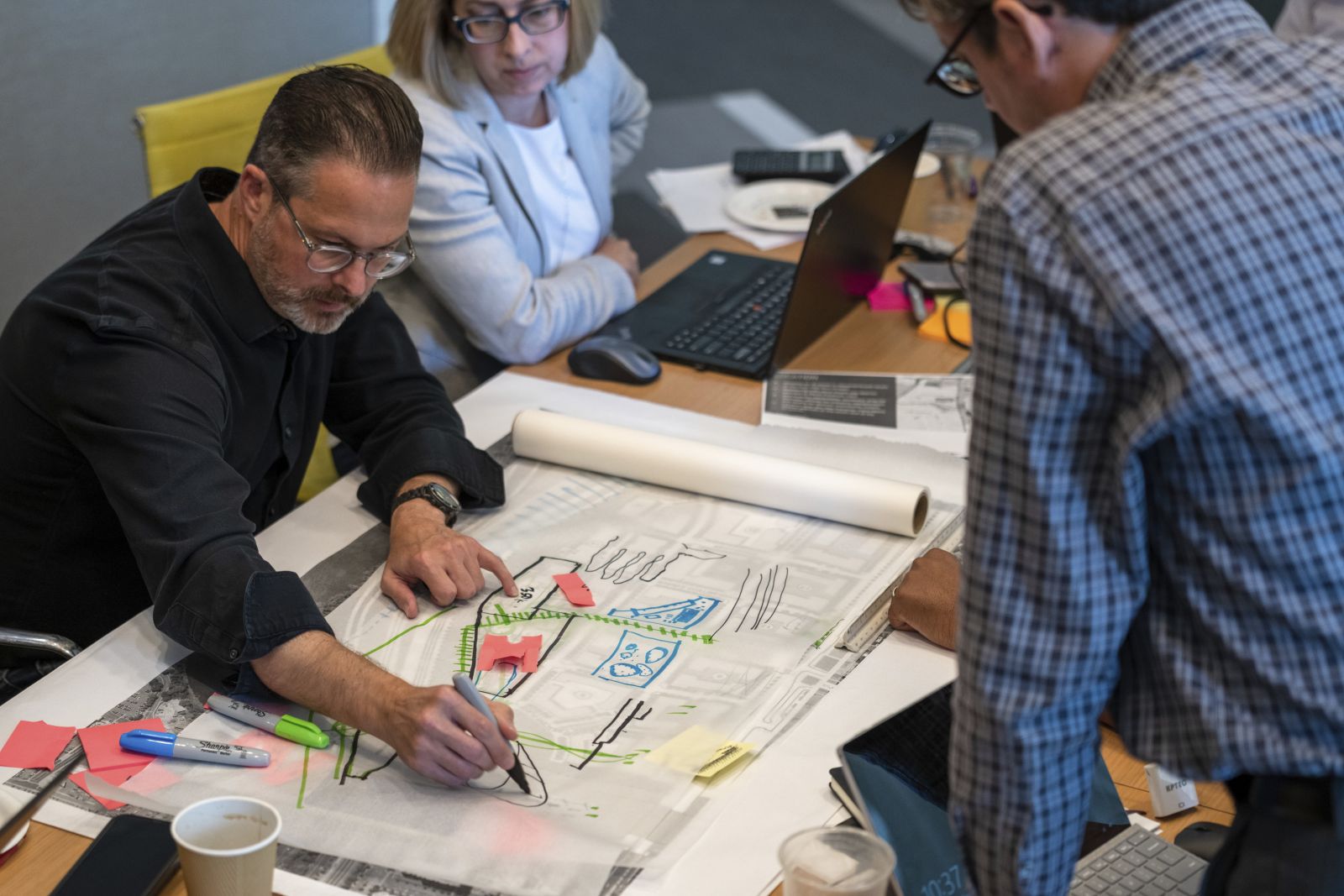
But design is just part of Johnson’s role at SmithGroup. As strategist, he engages with clients and conducts primary research, including with the Center for Higher Education and Research at UC Berkeley, in order to lead a conversation about how the built environment can respond to the changes within higher education. Part of his work was a recent partnership with Jones Lang LaSalle to write a piece on creating campuses that are physically and financially resilient.
“2020 has been disruptive and terrible, but it’s also been a rich opportunity to think about things differently,” Johnson says.
Thinking differently was an important part of Johnson’s Michigan education. He credits former professor Jason Young with teaching him “how to be critical of the built environment at the same time you’re learning to shape it” in a studio environment based on “highly intellectual, open-ended exploration.” He also recalls Professor Jim Chaffers’s model that showed what Ann Arbor could be if it had been redeveloped differently. “That was a significant recognition of all the decisions we make about the built environment and all the dimensions of the built environment. These were nascent ideas about social justice; history, motive, and intent; and the theatrical nature of the built environment. It depends on what assumptions we bring to it.”
Today, he sees Taubman College as a place that continues to question assumptions and embrace big ideas, which is one reason why he supports the college as a donor and volunteer. “I’m excited by the perspectives that leadership are bringing to architectural education and about the potential for deeper integration with the other professions that shaped the built environment,” he says. “Plus the students have incredible access to fabrication technology that changes the way they think about shaping space.”
“I’m excited by the perspectives that leadership are bringing to architectural education and about the potential for deeper integration with the other professions that shaped the built environment.”
— David Johnson, M.Arch ’95
Johnson increased his giving to the annual fund in 2020 — celebrating the 25th anniversary of his graduation and his daughter’s enrollment at the university made his connection to U-M feel “more present,” he says — and he also has participated in portfolio reviews and alumni panels in the past few years. He wants to do even more, as a donor and volunteer, in the years to come, as a way to say thanks for the support he received along the way. As a scholarship recipient, “I need to acknowledge the role that public education and the University of Michigan played in my life. And I need to do what I can to repay that gift by making it available to other people,” Johnson says.
Beyond the financial support he received, “There’s no question that Michigan’s reputation opened doors for me and also made me better prepared than many others. It gave me strong technical training coupled with a humanist understanding of how the built environment can and should make the world better.”
— Amy Spooner





